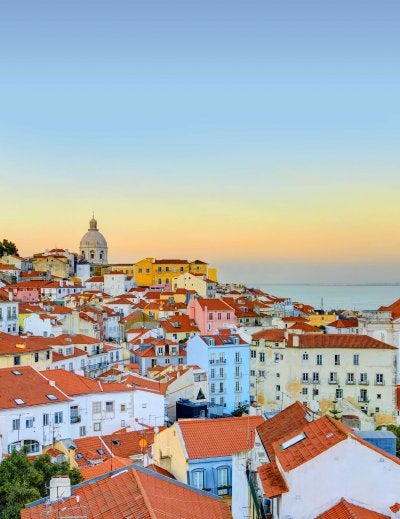
Boboli Gardens: Sculptures, Views, and Renaissance Charm
Discover the Boboli Gardens
The Boboli Gardens in Florence are one of Italy’s most iconic green spaces. Tucked behind the Pitti Palace in the Oltrarno district, just across the Arno River from Florence’s historic heart, the gardens are a masterpiece of Italian Renaissance landscape design. Spanning around 111 acres, they function as an open-air museum with fountains, sculptures, and panoramic views that tell the story of four centuries of art and history.
A Look Back in Time
Originally purchased by banker Luca Pitti in the 1400s, the estate later became part of the Medici family holdings. Cosimo I de’ Medici bought the property in 1549 for his wife Eleonora di Toledo, who found the Palazzo Vecchio too cramped. She started transforming the land behind the Pitti Palace into lavish gardens. Landscape architect Niccolò Pericoli (known as Tribolo) designed the layout, which was continued after his death by Vasari, Ammannati, and Buontalenti. Over time, the gardens grew under the hands of the Medici, Lorraine, and Savoy families and were eventually opened to the public in 1766.
Layout and Structure
The garden layout follows two main axes. One begins behind the palace, climbs the amphitheater and Neptune Fountain, and ends at the Knight’s Garden. The other cuts across via the Cypress Lane, or il Viottolone, leading to the Ocean Fountain and Porta Romana. The gardens are hilly, with gravel paths and stone steps, offering both scenic challenges and rewards.
Highlights of the Boboli Gardens
- The Amphitheater: Built into a former quarry, this dramatic feature hosted Medici-era performances. Today, it still sets the stage for cultural events.
- Egyptian Obelisk: Brought from Luxor, this 3,500-year-old obelisk is a standout centerpiece.
- Buontalenti Grotto: One of the garden’s most famous sights, it features surreal sculptures and stalactite-style decorations. Michelangelo’s Prisoners once stood here.
- Fountain of Neptune: Nicknamed the “Fork Fountain” by locals, this work by Lorenzi overlooks the garden from above.
- Bacchino Fountain: A humorous sculpture of Medici court dwarf Morgante riding a tortoise.
- Il Viottolone: This grand cypress-lined path leads downhill to more fountains, statues, and the Isolotto.
- Isolotto and Ocean Fountain: Surrounded by mythological statues and reflective waters, it’s a peaceful spot to rest.
- Kaffeehaus and Lemon House: The former was a royal refreshment spot, while the latter still stores hundreds of citrus plants.
- Knight’s Garden: Home to the Porcelain Museum, with gorgeous views and elegant staircases.
Entrances and How to Visit
There are four public entrances:
- Pitti Palace: Most central, but also the most crowded.
- Via Romana (Annalena Gate): Quieter, but not wheelchair accessible.
- Belvedere Fort: Offers sweeping views and easy parking.
- Porta Romana: Convenient for drivers, with minimal wait times.
You can enter through one gate and exit another, but always keep your ticket on hand. Tickets are available at some gates and online, with advance booking recommended.
Visiting Tips and Practical Info
- Opening Hours: Start at 8:15 AM. Closing times vary by season:
- 4:30 PM in winter
- Up to 7:00 PM in summer
- Closed: First and last Monday of each month (except summer), plus January 1, May 1, and December 25.
- Tickets:
- Single entry: Around €10, includes Bardini Garden.
- Combo with Pitti Palace: Around €22
- PassePartout 5-day ticket: Includes Uffizi, Pitti, Boboli, and more
- Free for under 18s and individuals with disabilities (with documentation)
Planning Your Day
Plan to spend at least three hours exploring the gardens alone. A full day is ideal if you combine your visit with the Pitti Palace. Wear sturdy shoes, bring water and snacks, and check ahead for renovations. Bathrooms are located near key garden points, but not always easy to find.
Family-Friendly Features
The Boboli Gardens are a great break from museums for kids. They can run, explore grottos, and enjoy the labyrinth near the Lemon House. Some paths are tough for strollers, so plan accordingly.
Getting There
Walking from central Florence takes about 15 minutes via Ponte Vecchio. You can also reach the gardens by bus (C3, C4, D, 11, 12, 13) or tram to nearby stops. Taxis and rental cars are options too, with easier parking near Porta Romana.
Nearby Attractions
The gardens are part of the Pitti Palace complex, home to several museums. The Bardini Garden is included with the same ticket and offers springtime wisteria tunnels. Oltrarno highlights include the Basilica of Santo Spirito, Santa Maria del Carmine with its Brancacci Chapel, and Forte Belvedere. The gardens also border the Vasari Corridor, connecting to the Uffizi Gallery.
Final Tips
If you’re looking for relaxing things to do in Florence, a stroll through the Boboli Gardens offers a unique mix of art, nature, and history. It’s a refreshing break from museum hopping and a beautiful way to appreciate Florence from a different angle.




Leave a Reply
You must be logged in to post a comment.